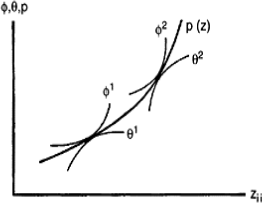Indirect Measurement Of Quality
Introduction:
The direct quality and preference measurement has been developed in a marketing context but the economic field has also been working with quality measurements for a number of years. By introducing the hedonic technique it is possible to obtain much more information about the nature of the relationship between price and quality than would be the case if a traditional correlation study were used.
AN OUTLINE OF THE HEDONIC THEORY:
- In classical micro-economic consumer theory consumer choice is based upon maximization of a utility function specified in the quantities consumed subject to a financial constraint.
-
To explain the determination of market equilibrium, Rosen (1974) assumed that the utility function of the household can be defined as

Where x is a vector of all other goods than the class of commodities considered and zi, I=1… n, are the attributes for this class. The vector αrepresents taste-determining characteristics and hence differs from person to person. Constrained utility maximization then leads to the bid function indicating the maximum amount a household would be willing to pay for different combinations of attributes at a given level of utility: θ= θ (z1,...,zn,y,α)
Where yis the household income, Symmetrically, Rosen (1974) shows that by means of ordinary profit maximization it is possible to define the producer’s offer function indicating the minimum price he is willing to accept for different combinations of attributes at a given level of profit: 
Where Mand β describe the level of output and the characteristics of the producer regarding production
This envelope or function is the implicit price function or the hedonic price function as it is often called (Griliches, 1971) and it shows the market relationship between the price and quality attributes of the class of differentiated commodities considered
- The hedonic function represents the available information in the market on which the agents base their decisions.
- This, of course, means that knowledge of the function is of great importance to the suppliers in the market if an optimal product development is going to take place.
- The hedonic technique will also be of value to those business people who are doing different kinds of price research, e.g. calculating and estimating price indexes in order to forecast future prices.
This is due to the fact that by help of the hedonic technique it is possible, by using time dummies or some other specification of time in the hedonic function, to separate the quality part of a price movement from the actual inflation and thus make it possible for the market analyst to adjust existing price indexes for quality variations and to make a prediction of future prices that also takes changes in quality into consideration.

Fig: Offer and bid functions and the Hedonic function